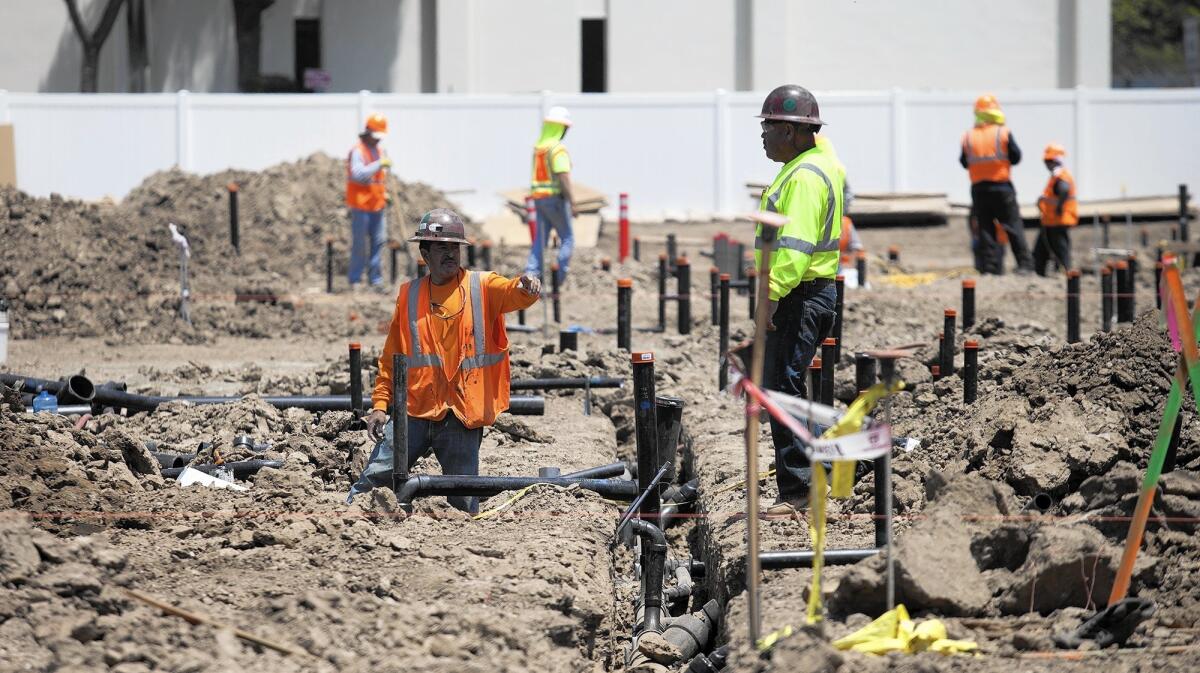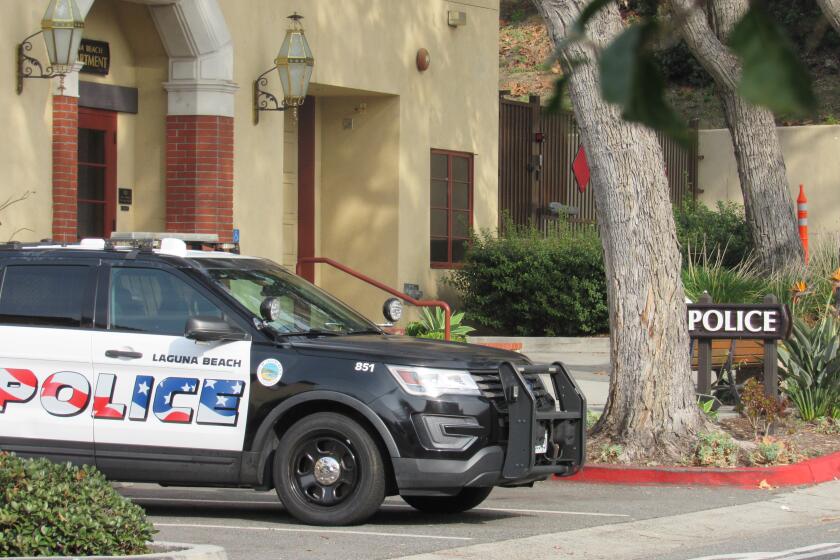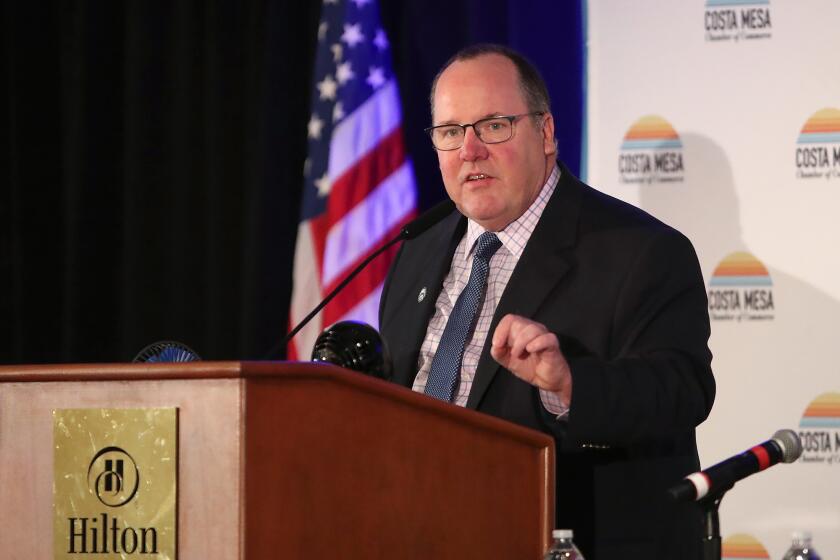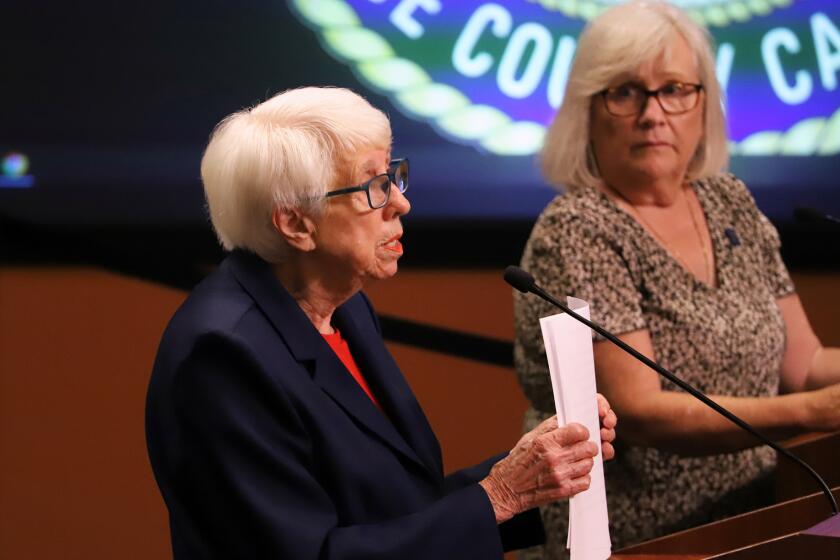Costa Mesa looks to ‘creative’ solutions to meet state-defined housing needs

“Creative” was a buzzword at a discussion Tuesday night among city leaders about housing in Costa Mesa. It was second only to “numbers.”
Costa Mesa, like many neighboring cities, received a shock in November when the Southern California Assn. of Governments decided to shift more responsibility toward the coast for accommodating 1.3 million new homes the state says Southern California needs over the next 10 years.
The number of housing units Costa Mesa will need to plan for more than doubled in the latest allocations, to 11,734 — which council members Tuesday called “ridiculous,” “skewed” and “out of whack.”
But in order to address the number, which Costa Mesa must do in updating the housing element of its general plan, the city will look for solutions such as co-living spaces, more accessory dwelling units and an inclusionary housing ordinance.
“We should be as creative as possible in addressing our ... absolutely insane [Regional Housing Needs Assessment] numbers,” Councilwoman Andrea Marr said.
Though the state doesn’t require cities to build the homes, they must at least accommodate the need on paper through zoning for residential development.
Tuesday’s discussion was a study session and did not result in any formal votes. Residents can expect to see a few proposals go before the council in coming months.
First, the council is expected to appeal its allotment in the spring. It could combine its appeal with other cities, such as Newport Beach, Huntington Beach and Fountain Valley, which similarly saw their RHNA numbers soar in the November allocations.
An inclusionary housing policy — which typically ensures either affordable-housing units or in-lieu fees for new developments that meet certain criteria — is expected to make its way to the City Council, with support from several members.
Another way Costa Mesa could meet its housing mandates is through accessory dwelling units, also known as “granny flats.” Such a unit is a second, small living space on an existing residential property.
State law now allows for ADUs in all residential and mixed-use zones, said Scott Porter, an attorney for the city. The city is expected to design a standardized template for ADUs to make it easier for developers or homeowners to get them approved.
One group called the Kind Guys Development gave a presentation on what its leader, Keith Page, called “hip, stylish modern-day dorms for adults.”
“It creatively addresses problems like excessive living expenses, loneliness, boredom, depression … by creating community and support,” Page said.
Council members called the idea an example of the creative solutions they will be exploring while designing the city’s housing element.
However, one possible hindrance to creative large-scale development is the city’s Measure Y, an initiative passed by local voters in 2016 that requires voter approval for developments that entail a general plan amendment or zoning change and add 40 or more dwelling units or 10,000 or more square feet of commercial space on top of what already exists.
Councilman Manuel Chavez called Measure Y the “bogeyman” in the room.
“We have to find a way to work around Measure Y in some capacity,” Chavez said. “We really can’t move forward as Costa Mesa with this at play. ... I would hate for us to not grow into what we can become because of Measure Y.”
Council members expressed special concern about housing for certain demographics — young entrepreneurs, senior citizens, families with children and current Costa Mesa families worried about displacement.
“I cannot tell you the fear I faced growing up seeing neighbors and friends I know ... seeing their apartments being replaced by housing that wasn’t affordable to us,” Chavez said. “It does affect lives, really.”
To tackle any of the policy work, though, several council members said they first need a vision for Costa Mesa. To that end, Mayor Katrina Foley suggested having a series of workshops in late summer — presumably after RHNA numbers are finalized following the appeals process — to meet with residents and create the vision together.
“We need a vision that looks at our entire city so that we can come at this from a creative point of view but also satisfy the needs for, obviously, the state but the residents too,” resident Cynthia McDonald said.
All the latest on Orange County from Orange County.
Get our free TimesOC newsletter.
You may occasionally receive promotional content from the Daily Pilot.




